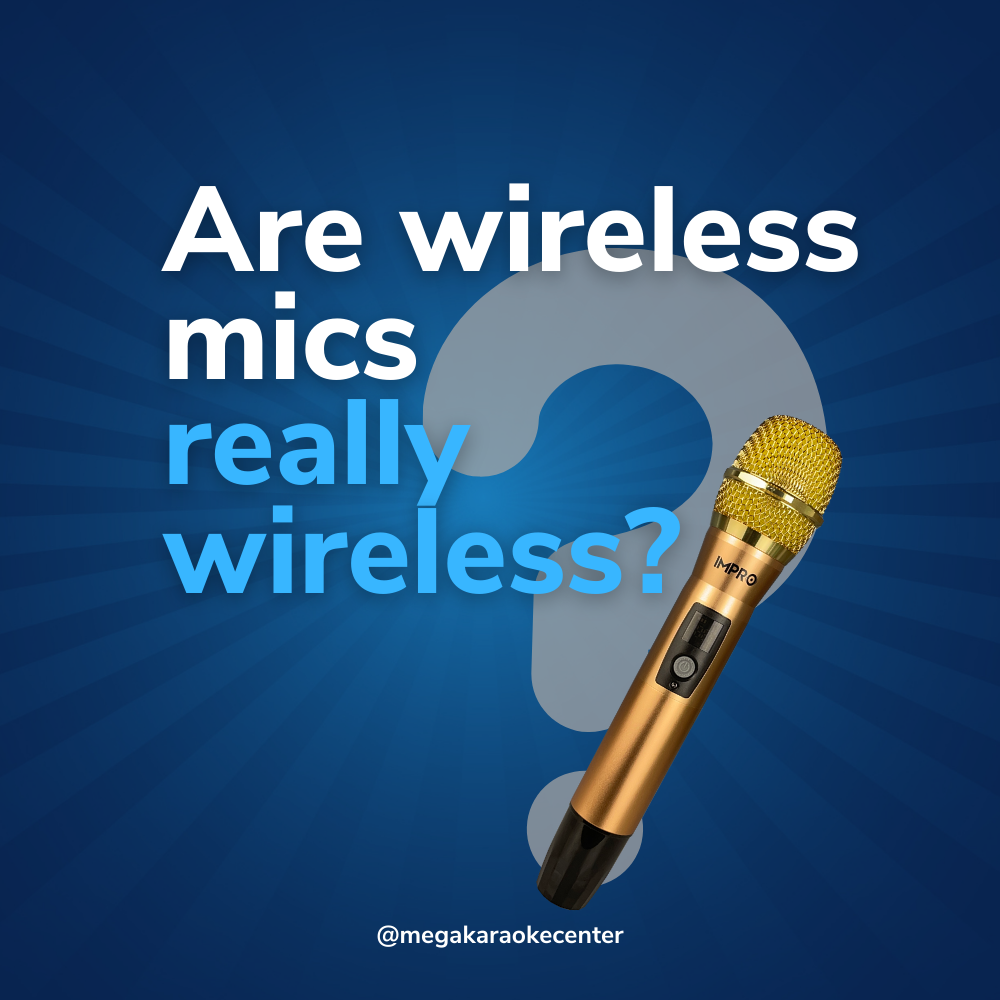The Inside Scoop on Wireless Microphones: Exploring the "Wireless" Myth
It's a common scene in most live events: a speaker holds up a cordless microphone and walks freely around the stage, talking and interacting without the hindrance of a cord. Many of us have been captivated by this unrestricted freedom and the seamless production value it offers. So, it's no surprise that many people assume that these so-called "wireless microphones" are completely wireless. But, as we delve deeper into the world of wireless microphones, we'll soon discover that this isn't entirely true.
While the handheld microphone component itself is indeed cordless, it's essential to understand that every wireless microphone system comes with a critical element: the receiver. In this blog post, we'll explore the full picture of wireless microphones, shedding light on the misconception of them being completely wireless, and taking a closer look at how they function.
The Magic of Wireless Microphones
Wireless microphones have revolutionized the audio world, providing ease of use and freedom of movement in numerous applications. They are extensively used in television broadcasting, public speaking, theater productions, and even professional singing. The absence of physical wires or cords attached to the microphone itself offers performers and speakers the liberty to move around without restriction or fear of tripping over cords.
But, this incredible technology isn't as 'wireless' as it may seem at first glance. Wireless microphone systems are indeed free from physical connections between the mic and the main audio system, but they still rely on radio frequency waves to transmit sound.
The Role of the Receiver
The receiver is the unsung hero in the wireless microphone system. While it might not get the same spotlight as the cordless microphone, it's equally essential. This device is designed to receive the radio frequency signals transmitted by the microphone and convert them back into audio signals.
The receiver must be connected to your audio system—be it a PA system, a mixer, or a speaker—via a cable. It essentially acts as the intermediary, capturing the microphone's radio signals, converting them into an audio signal, and then delivering this signal to your sound system. Without the receiver, your wireless microphone system would be non-functional.
Dissecting the Misconception
So, why do people often believe that wireless microphones are entirely wireless? The confusion most likely stems from the visible part of the system—the cordless microphone. As users, we interact with the handheld microphone, which is indeed free from cords. However, it's easy to overlook the receiver, often hidden away out of sight in the audio control room or behind the stage.
To accurately understand wireless microphones, we need to shift our thinking and look at the entire system. The term "wireless" refers to the connection between the microphone and the audio system, which is accomplished without physical wires. But the rest of the system, including the receiver and its connection to the audio system, still relies on wired connections.
In Conclusion
Wireless microphones have undoubtedly brought a new level of convenience and flexibility to audio systems. But it's crucial to remember that while the handheld microphone is cordless, a wireless microphone system as a whole isn't completely without wires. The receiver, an integral component of the system, must be connected to your audio speaker system via a wire for the system to function correctly.
Once we understand this, we can truly appreciate the wireless microphone system's ingenuity and the freedom it provides without getting tangled up in the idea that it's entirely devoid of wires. So the next time you see a speaker confidently pacing the stage with a cordless microphone in hand, remember the vital role the hidden receiver plays, quietly making all that audio magic possible.

